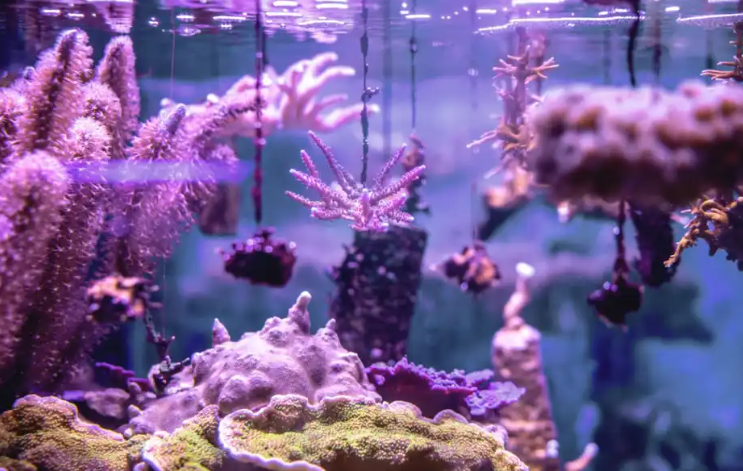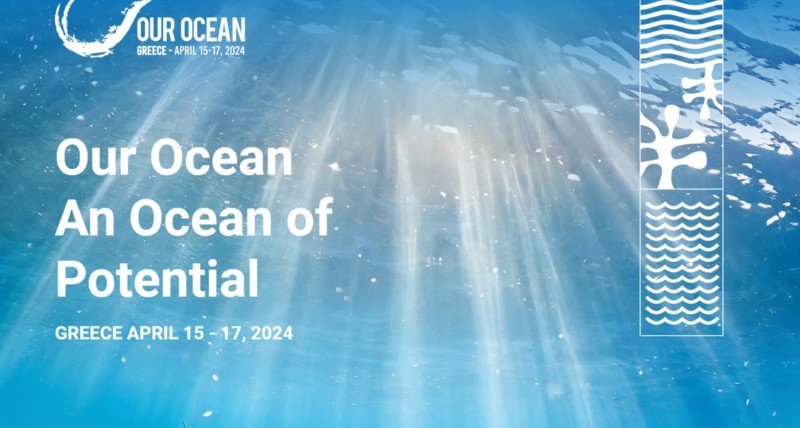Behind some aquariums, researchers are busy, eyes glued to their microscopes. Coral farming, research to enhance its venom, or controlled jellyfish breeding—Camille, Mickaël, and Fiona study living organisms at the Oniria Aquarium in Canet-en-Roussillon. Patrick Masanet, curator and scientific director, is eager to show the public these research facilities. « This interface between the public and scientists is very important. »


Research at Oniria: Learning More About Coral
Camille Vison, a marine biology PhD, studies the chemical or biological elements in the environment that could either harm or, conversely, help coral larvae settle. It’s worth taking a moment to understand how coral reproduces. Patrick Masanet explains that the corals at the aquarium are all from a strain established in 1986, meaning none of the corals at Canet have been taken from the wild.
The aquarist, who completed part of their training with Captain Cousteau in Monaco, is full of insights about corals. « In the wild, if a storm breaks corals, the current will carry the fragments to form a new colony further away. » This is known as reproduction by cutting or fragmentation. But, as an animal, coral also reproduces sexually, producing larvae.

In her lab, Camille dips her hands into an aquarium to retrieve a plate. « Each cutting is an individual that, every night, releases polyps. My work is to understand how the larvae will or won’t settle. »
Carried by the currents, these tiny individuals float around. However, thanks to their tiny cilia, the larvae can move to find a more favorable spot for their transformation into polyps and eventually corals. Camille’s goal is to determine which factors promote settlement. « Coral larvae don’t settle randomly. They’re influenced by chemical signals from their surroundings. The goal is to identify one or more molecules that are favorable, which could be implanted to make the location more suitable and help rebuild the reef. »
Enhancing Coral Venom to Help It Fight Predators
While rising ocean temperatures in the lagoons of Polynesia harm corals, human activities have also accelerated the invasion of crown-of-thorns starfish. These starfish, which feed on coral, wreak havoc on reefs. Until recently, researchers found that mass attacks occurred every 50 to 60 years, but the frequency of these invasions has increased, threatening the survival of coral reefs. According to researchers, these starfish invasions in the lagoons now occur every 10 to 12 years. The balance that allowed both species to thrive is under threat due to human activities, such as deforestation and erosion, which carry soil into the lagoons, altering their biochemistry.

Fiona Leroy, a second-year master’s student, is investigating how to « boost » coral venom to help it better defend against this predator. « The starfish covers the coral, extends its stomach—called evagination—and then releases digestive juices that decompose the coral entirely. Then, it absorbs the whole thing, » explains Fiona. The biologist is working to create a model that could be replicated in the wild.
« We’re studying venom to understand how coral can defend itself against these large starfish. When they’re not too numerous, corals can push them back. The idea is to stimulate the production of toxins so that coral can defend itself better and protect endangered reefs. »
In the blue-tinted tanks, corals are exposed to small starfish to observe how the attack occurs and how the coral defends itself.
Controlled Jellyfish Reproduction at Oniria
The aquarium also plays a key role in jellyfish breeding, and it’s Mickaël Schlinger, the caregiver and aquarist, who carefully monitors their reproduction from A to Z. Although, as Mickaël admits, « it’s simple in theory but a bit more complicated in practice. »

Before becoming the floating creature carried by currents that occasionally stings vacationers in the summer, the jellyfish exists as a polyp measuring 1 to 2 mm, fixed to a surface. At this stage in its life, the jellyfish reproduces asexually, with each polyp capable of giving rise to another polyp. In nature, when conditions are favorable, each polyp produces about fifteen ephyras, or jellyfish larvae.
« It looks like a little star, about a millimeter in diameter, » Mickaël shows. « To get jellyfish, I take this little plate, which is currently in an aquarium at 24°C, and I dip it into water at 10°C. Exactly five weeks after this thermal shock, the polyps will produce these tiny ephyras. »
In nine months, these baby jellyfish will grow to plate-sized proportions. They are then placed in a large tank where their graceful movements, enhanced by lighting effects, become hypnotic.
Mickaël reminds us of the animal’s extraordinary abilities. While the jellyfish at Oniria live for about two years, some species of jellyfish can, depending on their environment, regress from their adult form back to the polyp stage. This remarkable ability has likely allowed them to survive since the time of the dinosaurs.
Source: madeinperpignan



